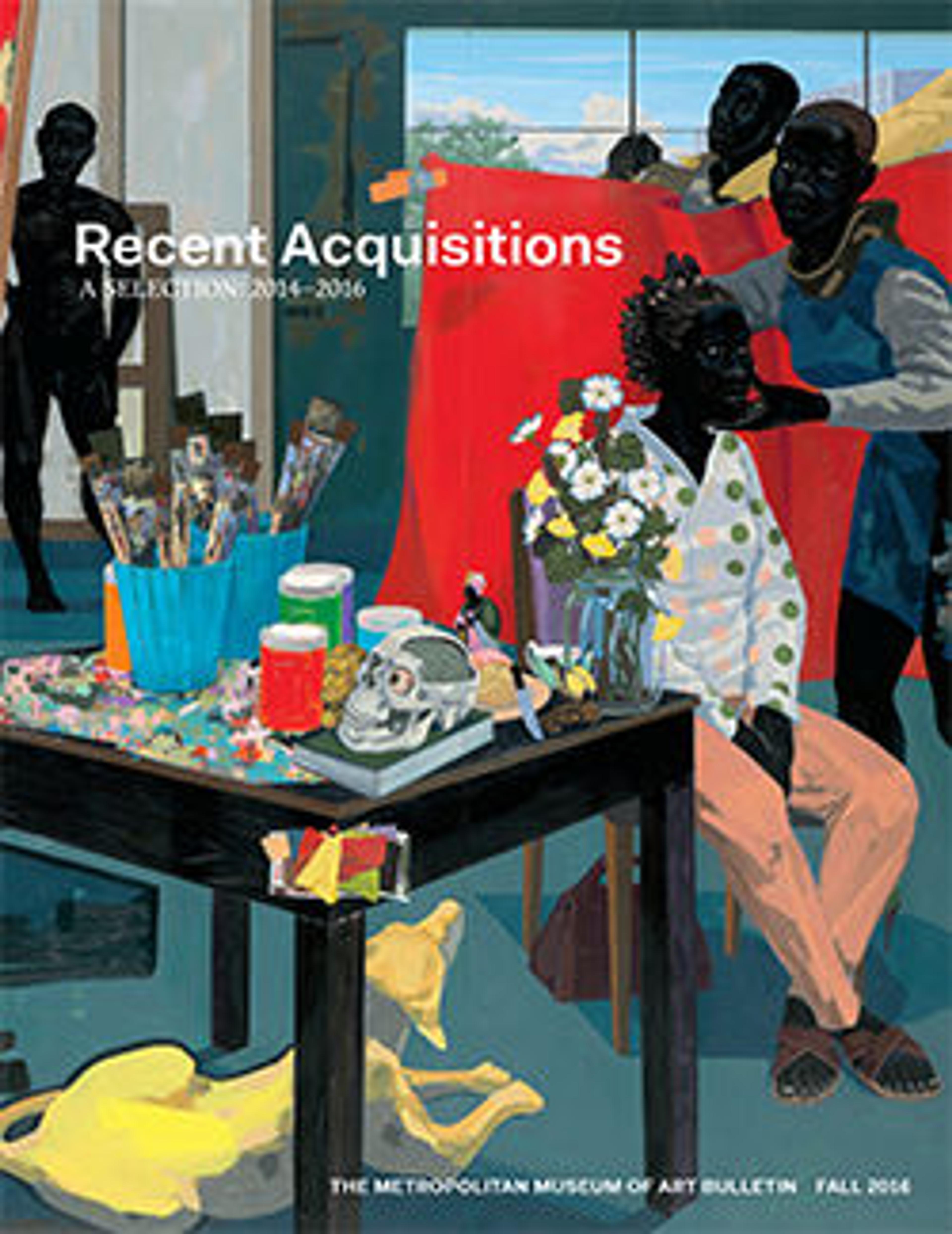Exodus Painting, five elements from a painted hanging depicting the Crossing of the Red Sea
Restituted
This artwork was restituted in August 2022. It is no longer in the museum’s collection.These five evocative paintings most compellingly evoke the moment when the traditional painting styles and themes of the Late Antique, Greco-Roman world expand to include Judeo-Christian themes. The realistically evoked bodies and expressive faces suggest Roman narratives that survive only in contemporary descriptions and on sarcophagi that have long lost their richly painted surfaces. The works were probably originally used in a burial in Egypt, where the images, as part of a large hanging, would have been an outermost layer of the burial wrappings. The surviving painted elements are from a depiction of the Crossing of the Red Sea as described in Exodus, especially verses 14:19 – 15:20. From the left, the figures are the head of the Angel of the Lord going behind the Israelites; a torso of an Israelite soldier; the Philistines astonished at the Israelite success; the army of the Pharaoh; and Mariam celebrating the successful crossing by playing on her tymbrel. The Philistines and soldiers are identified by inscriptions in Greek as “the astonished people” and “the army.” The works were made when Egypt was a sophisticated part of the Roman Empire ruled from Rome or New Rome, Constantinople. A fragmentary large hanging in the Abegg Foundation depicting events in Exodus is carbon 14 dated to A.D. 129-346, probably the timeframe of the “Exodus Paintings.” Those dates place the “Exodus Paintings” well before the depiction of the Crossing of the Red Sea beside the Torah niche on the walls of the Dura-Europus synagogue in Syria (first destroyed ca. A.D. 256). Or, if made at the later end of the date range, the paintings might have been made for Christian use, as the event became considered a symbol of universal baptism and salvation by the fourth century. Sarcophagi with similar depictions of Mariam appear ca. A.D. 380. Further study will help determine if these examples of the epic treatment of biblical history were part of the developing visual voice of the Jewish or Christian tradition, decorating a church or synagogue, or the aristocratic home of a devout member of either faith.
Artwork Details
- Title: Exodus Painting, five elements from a painted hanging depicting the Crossing of the Red Sea
- Date: mid-2nd–mid-4th century CE
- Culture: Byzantine
- Medium: Indigo dyed open-weave linen, tempera
- Dimensions: Framed (Montage of the 5 fragments): 24 5/8 × 55 1/2 × 2 3/8 in. (62.5 × 141 × 6 cm)
- Classification: Paintings
- Credit Line: Purchase, Rogers and Harris Brisbane Dick Funds; Caroline Howard Hyman Gift; Hagop Kevorkian Fund Gift, in memory of Hagop Kevorkian; Mr. and Mrs. Paul Ruddock, Tianaderrah Foundation, John C. Weber, Diane Carol Brandt, several members of The Chairman's Council, and Elizabeth A.R. and Ralph S. Brown Jr. Gifts; Austin B. Chinn Gift, in honor of Diane Carol Brandt; Christopher C. Grisanti and Suzanne P. Fawbush and Reynolds Rencourt Foundation Gifts, 2014
- Curatorial Department: Medieval Art and The Cloisters
More Artwork
Research Resources
The Met provides unparalleled resources for research and welcomes an international community of students and scholars. The Met's Open Access API is where creators and researchers can connect to the The Met collection. Open Access data and public domain images are available for unrestricted commercial and noncommercial use without permission or fee.
To request images under copyright and other restrictions, please use this Image Request form.
Feedback
We continue to research and examine historical and cultural context for objects in The Met collection. If you have comments or questions about this object record, please contact us using the form below. The Museum looks forward to receiving your comments.
